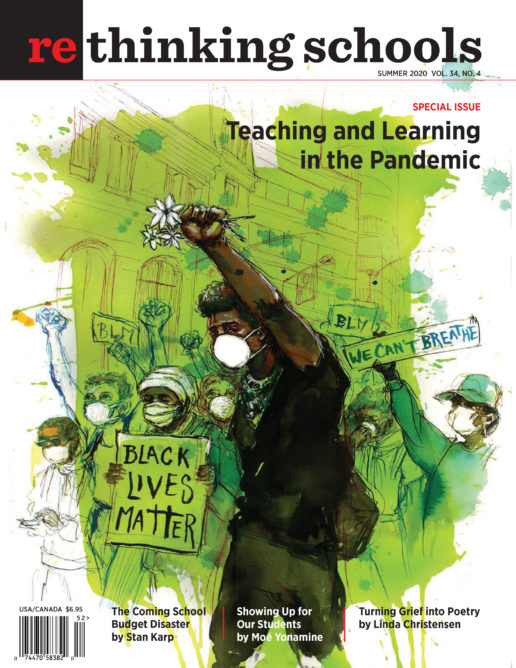The Pandemic Is a Portal
Illustrator: Adrià Fruitós
Who can use the term “gone viral” now without shuddering a little? Who can look at anything anymore — a door handle, a cardboard carton, a bag of vegetables — without imagining it swarming with those unseeable, undead, unliving blobs dotted with suction pads waiting to fasten themselves on to our lungs?
Who can think of kissing a stranger, jumping on to a bus, or sending their child to school without feeling real fear? Who can think of ordinary pleasure and not assess its risk? Who among us is not a quack epidemiologist, virologist, statistician, and prophet? Which scientist or doctor is not secretly praying for a miracle? Which priest is not — secretly, at least — submitting to science?
And even while the virus proliferates, who could not be thrilled by the swell of birdsong in cities, peacocks dancing at traffic crossings, and the silence in the skies?
The number of cases worldwide this week (April 3) crept over a million. More than 50,000 people have died already. Projections suggest that number will swell to hundreds of thousands, perhaps more. The virus has moved freely along the pathways of trade and international capital, and the terrible illness it has brought in its wake has locked humans down in their countries, their cities, and their homes.
But unlike the flow of capital, this virus seeks proliferation, not profit, and has, therefore, inadvertently, to some extent, reversed the direction of the flow. It has mocked immigration controls, biometrics, digital surveillance, and every other kind of data analytics, and struck hardest — thus far — in the richest, most powerful nations of the world, bringing the engine of capitalism to a juddering halt. Temporarily perhaps, but at least long enough for us to examine its parts, make an assessment, and decide whether we want to help fix it or look for a better engine.
The mandarins who are managing this pandemic are fond of speaking of war. They don’t even use war as a metaphor, they use it literally. But if it really were a war, then who would be better prepared than the United States? If it were not masks and gloves that its frontline soldiers needed, but guns, smart bombs, bunker busters, submarines, fighter jets, and nuclear bombs, would there be a shortage?
Night after night, from halfway across the world, some of us watch the New York governor’s press briefings with a fascination that is hard to explain. We follow the statistics, and hear the stories of overwhelmed hospitals in the United States, of underpaid, overworked nurses having to make masks out of garbage bin liners and old raincoats, risking everything to bring succor to the sick. About states being forced to bid against each other for ventilators, about doctors’ dilemmas over which patient should get one and which left to die. And we think to ourselves, “My God! This is America!” . . .
[C]oronavirus has made the mighty kneel and brought the world to a halt like nothing else could. Our minds are still racing back and forth, longing for a return to “normality,” trying to stitch our future to our past and refusing to acknowledge the rupture. But the rupture exists. And in the midst of this terrible despair, it offers us a chance to rethink the doomsday machine we have built for ourselves. Nothing could be worse than a return to normality.
Historically, pandemics have forced humans to break with the past and imagine their world anew. This one is no different. It is a portal, a gateway between one world and the next.
We can choose to walk through it, dragging the carcasses of our prejudice and hatred, our avarice, our data banks and dead ideas, our dead rivers and smoky skies behind us. Or we can walk through lightly, with little luggage, ready to imagine another world. And ready to fight for it.
This text is abridged and excerpted from “The Pandemic Is a Portal,” in Azadi: Freedom. Fascism. Fiction., forthcoming from Haymarket Books. Used by permission of Haymarket Books. Copyright © 2020 by Arundhati Roy.

